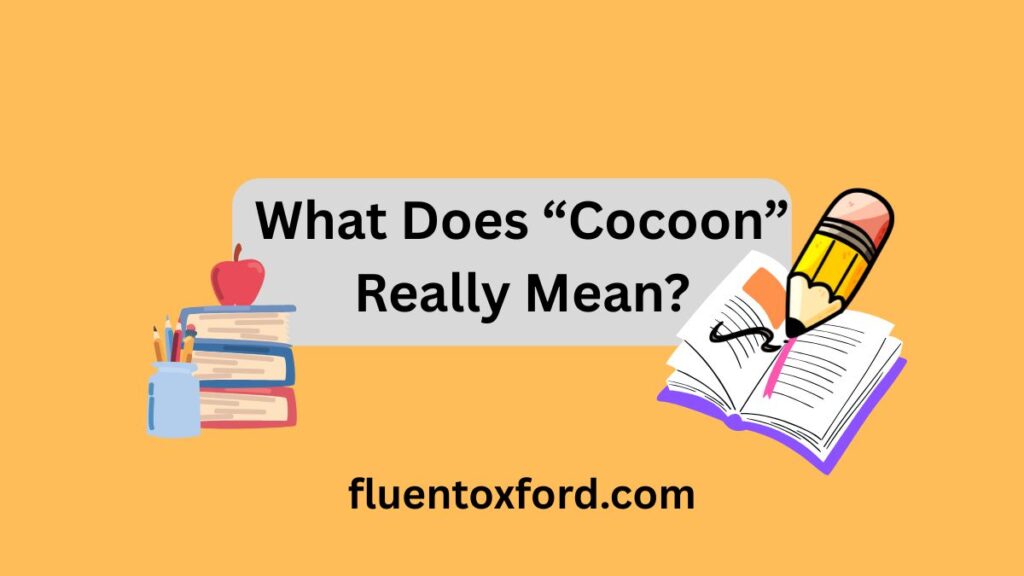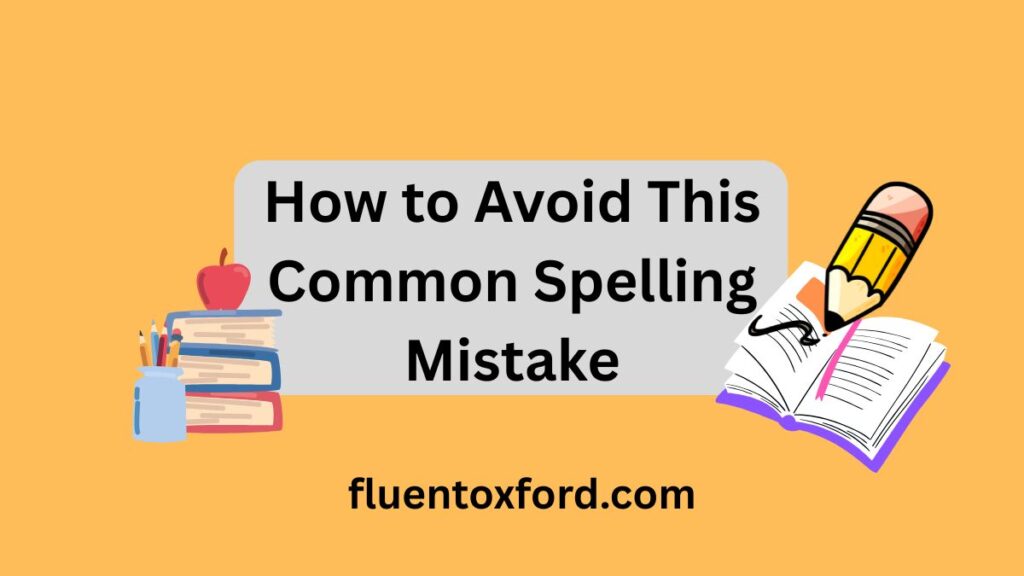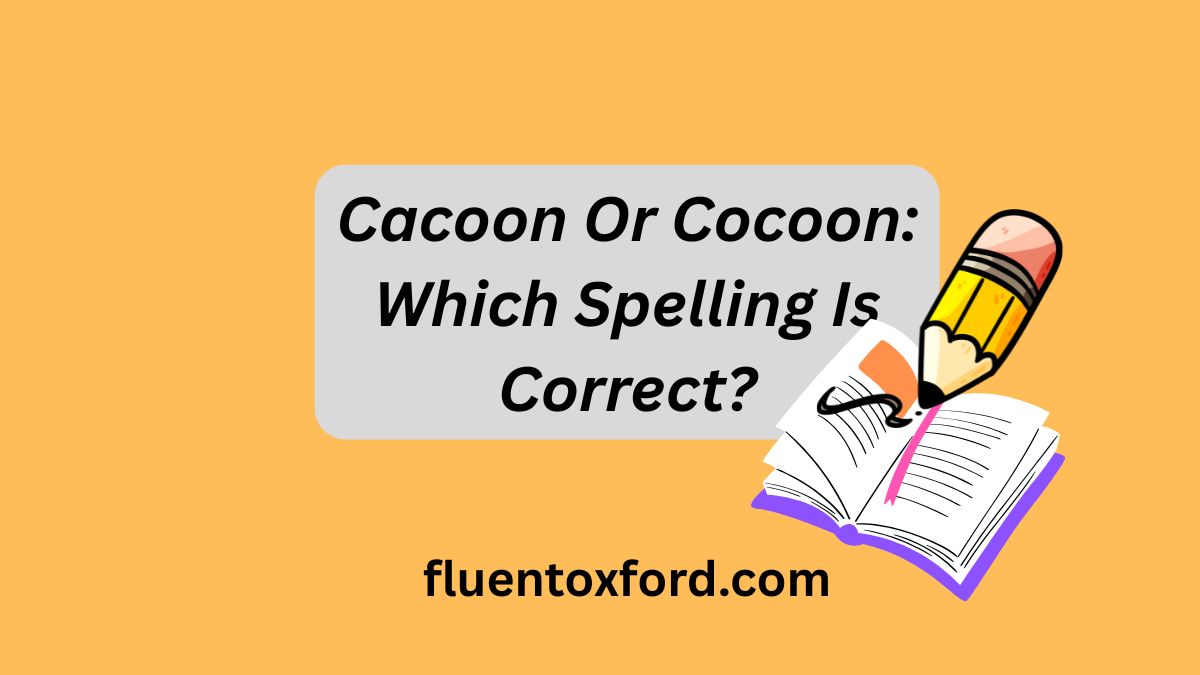The phrase “Cacoon or Cocoon: Which Spelling is Correct?” revolves around distinguishing between two similar-looking words—only one of which is accurate in standard English. Cocoon refers to the silky, protective case spun by insects like moths and butterflies during their pupal stage. It symbolizes transformation and protection. On the other hand, Cacoon is a common misspelling or, in some contexts, a stylized brand name, but it is not recognized as a correct spelling in the English language.
Every day, readers and writers encounter words that appear correct but subtly betray standard spelling rules. This simple difference of one letter—“a” versus “o”—can change the credibility of a written sentence. In an age of fast digital communication, the pressure to be correct and clear is more important than ever. Getting it wrong, even slightly, can shift impressions and meanings.
Spelling mistakes are common, especially when words sound the same. The phrase Cacoon or Cocoon: Which Spelling is Correct? highlights one such mix-up. Understanding the subtle difference between “cacoon” and “cocoon” not only helps with spelling accuracy but also boosts confidence in communication. It sheds light on how often language learners, writers, and even native speakers are misled by phonetics. Exploring this topic reveals how vital attention to detail is in mastering language precision.
Quick Answer: Is It “Cacoon” or “Cocoon”?
The correct spelling is “cocoon.”
Cacoon is a spelling error—plain and simple—except in rare cases where it’s used as a brand name (we’ll get to that later).
The word cocoon refers to a protective casing spun by insects like moths and silkworms during their transformation process. It’s also widely used in metaphorical usage to describe a state of isolation, safety, or personal growth.
Why People Get Confused Between “Cacoon” and “Cocoon”
There are a few reasons why this confusion is so common:
- They sound the same when spoken aloud.
- Typing “cacoon” often feels more intuitive for English speakers unfamiliar with the correct spelling.
- Many assume “cacoon” could be an alternate spelling or even a regional variant—it’s not.
- Auto-correct fails or doesn’t flag the incorrect version.
Examples of Confusion Online:
| Source | Example | Corrected Version |
| Twitter Post | “I’m in my little cacoon of peace.” | “I’m in my little cocoon of peace.” |
| Blog Comment | “She emerged from her cacoon renewed.” | “She emerged from her cocoon renewed.” |
| Amazon Product | “Hanging Cacoon Tent” | “Hanging Cocoon Tent” (Unless it’s the brand) |
What Does “Cocoon” Really Mean?

At its core, a cocoon is a silky, fibrous case that insects like the silkworm spin around themselves during pupation.
Definition:
- Noun: A soft, protective covering spun by the larvae of moths or other insects before they become adults.
Cocoon in Nature: The Science Behind the Word
The word cocoon isn’t just a poetic image—it’s rooted in biology.
What Is a Cocoon, Biologically Speaking?
A cocoon is a fibrous protective casing created by certain insects during metamorphosis. It’s most commonly associated with moths and silkworms, although not all insects form cocoons.
“The cocoon is spun from silk produced by the larvae, enclosing the insect in a soft, insulating shell while it undergoes a dramatic transformation.”
The Role of the Cocoon in the Transformation Process
- Stage: It occurs between the larval and adult stages of development.
- Purpose: Offers protection from predators and environmental conditions.
- Duration: Can last from a few days to several months, depending on species and environment.
Famous Example: The Silkworm Cocoon
The silkworm cocoon is particularly valuable in the textile industry. Each cocoon consists of a single thread of silk that can measure up to 900 meters in length.
According to the International Sericultural Commission, it takes approximately 2,500 silkworm cocoons to produce a single pound of raw silk.
In the botanical context, the term isn’t commonly applied—though some mistakenly use it when describing tropical bean pods or seed casings.
In metaphorical usage, the word is powerful:
- “She stayed in a cocoon of grief for months after the loss.”
- “That retreat was my mental cocoon—quiet, peaceful, transformative.”
Is “Cacoon” Even a Real Word?
Not in the dictionary, no.
However, Cacoon has been adopted by a few businesses and product brands—most notably Cacoon World, which produces unique hanging cocoon chairs.
Case Study:
The company Cacoon World deliberately uses the alternative spelling for branding. Their signature product is a hanging tent pod designed for both adults and children—a modern interpretation of the protective casing idea.
So when might you see “Cacoon”?
- Brand names
- Misspelled product titles
- Incorrect blog or social media posts
But outside of those contexts, it’s a mistake.
Head-to-Head Comparison: “Cacoon” vs “Cocoon”
| Feature | Cocoon | Cacoon |
| Correct Spelling | ✅ Yes | ❌ No |
| Appears in Dictionary | ✅ Yes | ❌ No |
| Definition | A protective covering spun by insects | Not a defined word |
| Common Usage | Biology, psychology, metaphors | Rare brand name, common typo |
| Search Trend | 10x more common in search results | Frequently flagged by spellcheckers |
Real-World Examples in Context

Correct Use of “Cocoon”
- “The silkworm spins a cocoon before transforming into a moth.”
- “After burnout, she retreated into a cocoon of healing.”
- “Butterflies emerge from their cocoon in a dazzling display of change.”
Incorrect Use of “Cacoon”
- “He slept in a comfortable cacoon.” ❌
- “The child wrapped herself like a cacoon.” ❌
Even tools like Grammarly and Microsoft Word typically flag “cacoon” as a spelling error.
The Origin and Evolution of the Word “Cocoon”
Let’s break it down.
Etymology:
- From French “cocon”, meaning “egg-case of insects”
- Rooted in Latin “coccum”, referring to a berry or seed—possibly influenced by the protective casing appearance
Historical Usage:
- First used in English around 1690s
- Gained symbolic meaning in 20th-century literature and traditional medicine, where the term described protective, inward-turning states
- Became more common in scientific texts describing insect development
Modern Applications:
- Psychology: “cocooning” describes people retreating from social life or overstimulation
- Technology: Metaphorical references to transition phases (e.g., startup “cocoons” before launching)
- Design: Rounded, enclosed furniture like cocoon chairs and hammocks
Cocoon Symbolism and Cultural Significance
The cocoon isn’t just a biological structure—it’s a powerful symbol in literature, psychology, and spirituality.
In Literature and Psychology
The idea of “cocooning” is often used to describe a temporary retreat or a period of internal growth. It represents transition, self-protection, and rebirth.
Examples of metaphorical usage:
- “He entered a cocoon of grief after the accident.”
- “She cocooned herself from the noise of the world.”
In Traditional Medicine and Culture
- Traditional Chinese Medicine (TCM) uses powdered silkworm cocoon in certain treatments believed to improve skin health and promote detoxification.
- In Japanese culture, the cocoon is a symbol of feminine strength, delicacy, and endurance.
- In modern wellness culture, “cocooning” refers to intentional isolation for self-care and healing.
The Rise of “Cacoon” in Branding and Design
While cacoon is not correct as a word, it has become a clever branding choice in some niches.
Cacoon Chairs and Hanging Pods
One of the most well-known uses of the word “cacoon” is in the world of outdoor furniture. The term is often used to describe:
- Hanging chairs or suspended pods
- Outdoor tents shaped like cocoons
- Personal relaxation spaces
These are sometimes marketed as “cacoon chairs”—a stylized twist on the idea of a protective, enclosed retreat.
Why Use “Cacoon” as a Brand?
- It stands out in search engines (SEO advantage for branded terms).
- Easy to trademark.
- Visually similar to “cocoon” but unique enough to avoid confusion (in theory).
Tip: If you’re naming a product, avoid using misspellings unless you’re deliberately building a brand. It can hurt SEO and confuse customers.
Special Case: When “Cacoon” Might Be Intentional
This is the one time “cacoon” isn’t wrong—it’s just branding.
Brand Example:
- Cacoon World (makers of hanging tents and hammocks)
- The spelling was chosen for distinctiveness and trademark purposes
But using “cacoon” outside of a specific product or brand can backfire:
- Damages SEO performance
- Makes writing look unprofessional
- Risks credibility in academic, medical, or scientific settings
How to Avoid This Common Spelling Mistake

If you find yourself typing “cacoon,” here’s how to catch and fix it:
Quick Memory Tips:
- Double O = Two arms wrapping in protection
- Think of the word “moon”—also two o’s, and often associated with tranquility
Tools That Help:
- Grammarly: Flags spelling errors instantly
- Google Docs: Built-in spellchecker for real-time corrections
- Merriam-Webster App: Great for quick lookups
Cacoon vs Cocoon: Search Trends & SEO Insights
Google Trends Data
A quick look at Google Trends shows that “cocoon” consistently outperforms “cacoon” worldwide.
| Search Term | Popularity (Scale 0–100) |
| Cocoon | 100 |
| Cacoon | 8 |
This means that if you’re writing content, naming a business, or launching a product—“cocoon” is the more search-friendly term.
Impact of Misspelling on SEO
- Lower click-through rates due to lack of clarity
- Penalization by search engines if the misspelling is viewed as keyword stuffing
- Reduced trust from readers and customers
Spelling correction and word normalization tools will often flag “cacoon” as a mistake and autocorrect it to “cocoon.”
Language and Linguistics: How Spelling Errors Like “Cacoon” Spread
Misspellings like “cacoon” happen for several predictable reasons, many of which fall under natural language processing (NLP) concepts:
Relevant NLP Terms and Concepts
- Edit Distance / Levenshtein Distance: Measures how close “cacoon” is to “cocoon” (only one character off).
- Tokenization: How computers break words apart—”cacoon” becomes an unknown token.
- Disambiguation: Helps determine context (e.g., is “Cacoon” a brand or just a typo?).
- Language Modeling: Predicts what word should appear—“cocoon” makes sense in a sentence, “cacoon” doesn’t.
These errors often go viral when:
- Influencers or bloggers repeatedly use them.
- Products are mislabeled on e-commerce platforms.
Users copy and paste misspellings without verifying them.
Mnemonic Tricks to Remember the Correct Spelling
Still having trouble remembering? Here are some fun, quick ways to keep it straight:
- Think of a cocoon as having two O’s for two arms wrapping around you.
- Associate “moon” with “cocoon”—both are round, soft, and comforting.
- Say: “Cool things have two O’s—so does cocoon.”
Related Concepts and SEO Keywords to Know
Here’s a final list of terms you might see around this topic:
| Term | Meaning |
| Spelling correction | The act of fixing typos like “cacoon” to “cocoon” |
| Tokenization | NLP process for breaking up text into words like “cocoon” |
| Word normalization | Making different versions of a word consistent |
| Named Entity Recognition | Helps identify “Cocoon” as a product or concept |
| Edit distance | Measures how far apart “cacoon” and “cocoon” are |
| State of isolation | A metaphorical interpretation of “cocoon” |
| Cocoon chairs | Furniture styled after the protective shape of a cocoon |
| Transformation process | The pupal stage where change happens inside a cocoon |
| Tropical bean | Sometimes mistakenly labeled as “cocoon” in herbal markets |
| Cultural significance | The cocoon’s symbolic role across cultures and literature |
Conclusion
In the end, the answer to Cacoon or Cocoon: Which Spelling is Correct? is clear. The correct spelling is cocoon. It is the word used to describe the silky case made by some insects. The word cacoon is just a common spelling mistake. It may look similar, but it is not found in standard dictionaries.
Understanding Cacoon or Cocoon: Which Spelling is Correct? helps improve your writing and spelling skills. Even small errors can affect how others see your work. Learning the right form shows care and attention to detail. It also makes your language clear and correct.
FAQs
Q1: Is “Cacoon” a real word?
No, “cacoon” is a common misspelling of the correct word “cocoon.” It is not recognized in any standard English dictionary.
Q2: Why do some products use “Cacoon” in their branding?
Brands like Cacoon World intentionally use the misspelling for uniqueness and trademark purposes, especially in outdoor hanging chairs and pods.
Q3: Which spelling is grammatically correct: Cocoon or Cacoon?
“Cocoon” is the only grammatically and orthographically correct spelling in English.
Q4: Is “cacoon” used in any language or regional dialect?
No official language or dialect uses “cacoon” as a standard word; it’s purely a spelling error or stylized branding.
Q5: What’s the current usage rate between “cocoon” and “cacoon”?
According to Google Trends (2025), “cocoon” is searched over 90% more frequently than “cacoon” globally.

As an admin at Fluent Oxford, Maida Queen is the driving force behind our vibrant learning community. With a deep passion for English language education, she ensures that our platform remains a dynamic, engaging, and supportive space for learners worldwide.
Maida expertly manages content, assists users with their grammar and fluency queries, and fosters an interactive environment where learning feels effortless and enjoyable. Whether you need guidance, motivation, or just a friendly face in the Fluent Oxford community, Maida is always there to help you reach your English language goals.








